Ivy care and growing guide: tips for these beautiful climbing vines
Learn how to look after ivy in your backyard – or even indoors


Ivy is an attractive, evergreen, easy-to-grow, shade-loving vine that clings neatly to fences, walls and tree trunks and often features prettily patterned foliage. It is an indispensable plant, tolerating deeper shade than any other vine, but it can be invasive, especially in the West and Midwest.
These adaptable climbing plants cling to their host by tiny roots that develop wherever a stem touches a wall, tree trunk, wooden fence or other support. Ivy is not a harmful parasite – these tiny roots do nothing but hold the stems in place. Ivy also grows as a vigorous and effective ground cover.
The leaves of most ivies are shaped more or less like an arrowhead but some larger ivies have undivided leaves. There are hundreds of varieties, many of the most attractive have leaves that are prettily marked in gray, white, cream or yellow.
When growth reaches better light, or reaches the top of its support, the leaves often become larger and broader and only on this growth do the pale green fall flowers and black winter berries develop. These late flowers are popular with pollinating insects and the berries are eaten by birds.
Ivies also make excellent houseplants as they grow well in the low light inside many homes.
Ivy key facts:
- Plant type: Evergreen vine or ground cover
- Mature size: 6-100ft (2-30m)
- Soil type: Any except permanently wet
- Soil pH: Any except very acid
- Time to plant: Fall, spring
- Flowering/fruiting time: Autumn/winter
- Flower color: Pale yellow, green
- Hardiness zones: USDA Z4-6 (RHS H5)
- Scientific name: Hedera
- Common name: Ivy, English ivy

The two main types of ivy
Some ivies have large leaves up to 9in (23cm) across, while some have leaves as small as 1in (2.5cm) across – although most develop larger leaves as they start to flower.
Large-leaved ivy
Ivies with large leaves are mostly varieties of Hedera algeriensis and Hedera colchica. They are generally more vigorous than small-leaved ivies, though grip their hosts less securely, with less neatly-lobed foliage and a wilder, more disorganized look.
Small-leaved ivy
Ivy plants with small, neat leaves are mostly varieties of the English ivy, Hedera helix. On walls and tree trunks they cling as they climb and branch out to create an overlapping sheet of leaves, a little like disorganized fish scales. Green-leaved varieties grow better in dark shade, variegated varieties prefer lighter shade. Small-leaved ivies can also make a low, flat ground cover.

How to use ivy in your backyard
There are multiple ways to use ivy in your planting scheme – here are some popular approaches for this fast growing climbing plant:
- As a vine: Consider vining ivy as a background to the flower garden and choose the leaf color thoughtfully. ‘Buttercup’ (yellow leaves) or ‘White Ripple’ (silver patterned) are good choices.
- Ground cover: Green-leaved ivy, such as ‘Pittsburgh’, is a good weed-smothering background for daffodils in a small space, while varieties of Hedera colchica are the most effective at smothering and preventing weed growth.
- Hiding eyesores: A fast-growing evergreen vine is sometimes needed to cover a shed or summerhouse that has seen better days. The large-leaved Hedera colchica ‘Dentata Variegata’ is ideal.
- Containers: Choose a variety that is prettily patterned (‘Goldchild’) or with an interesting shape (‘Duckfoot’) to trail over the sides of pots. Ivy is also a great hanging basket plant for a shaded deck.
- Houseplants: Most small-leaved ivies will grow well in the home, but ensure they are watered and fed regularly.
- Topiary: Compact varieties such as ‘Chicago’ are planted in wire frames to create the shapes of animals, often life-sized, or of people. These are relatively short-lived topiary features as ivy plants eventually resent the repeated clipping necessary to keep them to size.
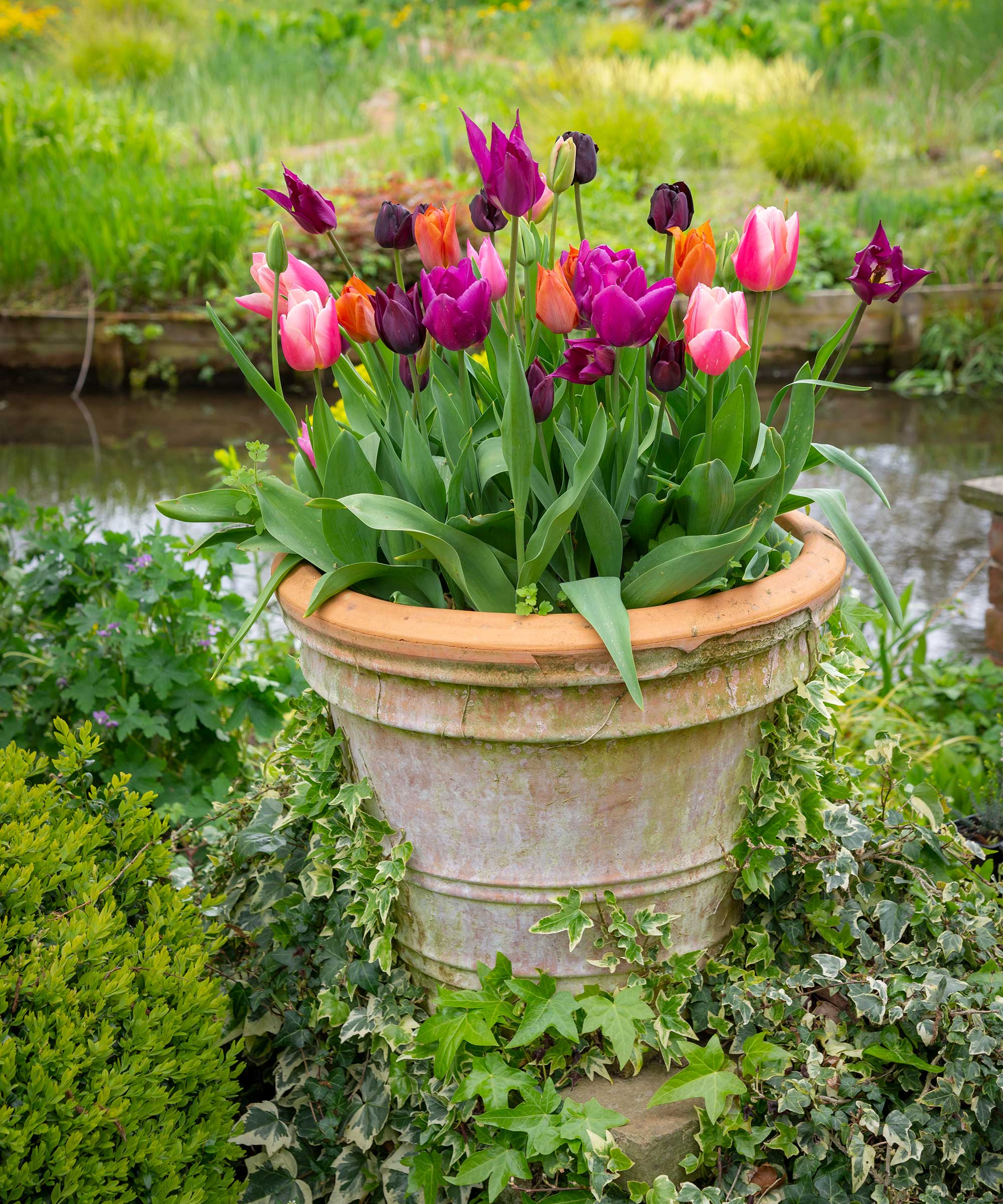
How to plant ivy
The experts at the Missouri Botanic Garden explain that ivy is easily grown in part shade to full shade. It will also grow in full sun. It tolerates a wide range of soils, but prefers rich loams, and although it tolerates some drought, it produces best foliage color in evenly moist soils – but make sure there is good drainage.
Ivies are best planted in spring or fall, or in mild spells in winter in warmer areas.
When planting against garden walls, the soil may be poor, and the soil next to tree trunks may be full of tree roots. Either way, it pays to prepare thoroughly. Add plenty of garden compost or planting mix to the planting hole. Water in well, and apply a weed-free mulch.
Ivy shoots may need guiding in the right direction before they take a grip. The simplest approach is to use a small piece of duct tape to fix the stems to the climbing surface.
For ground cover, be sure to remove all existing weeds from the area then plant about 9in (23cm) apart. Do not mix different varieties, as in the end, one will usually take over.
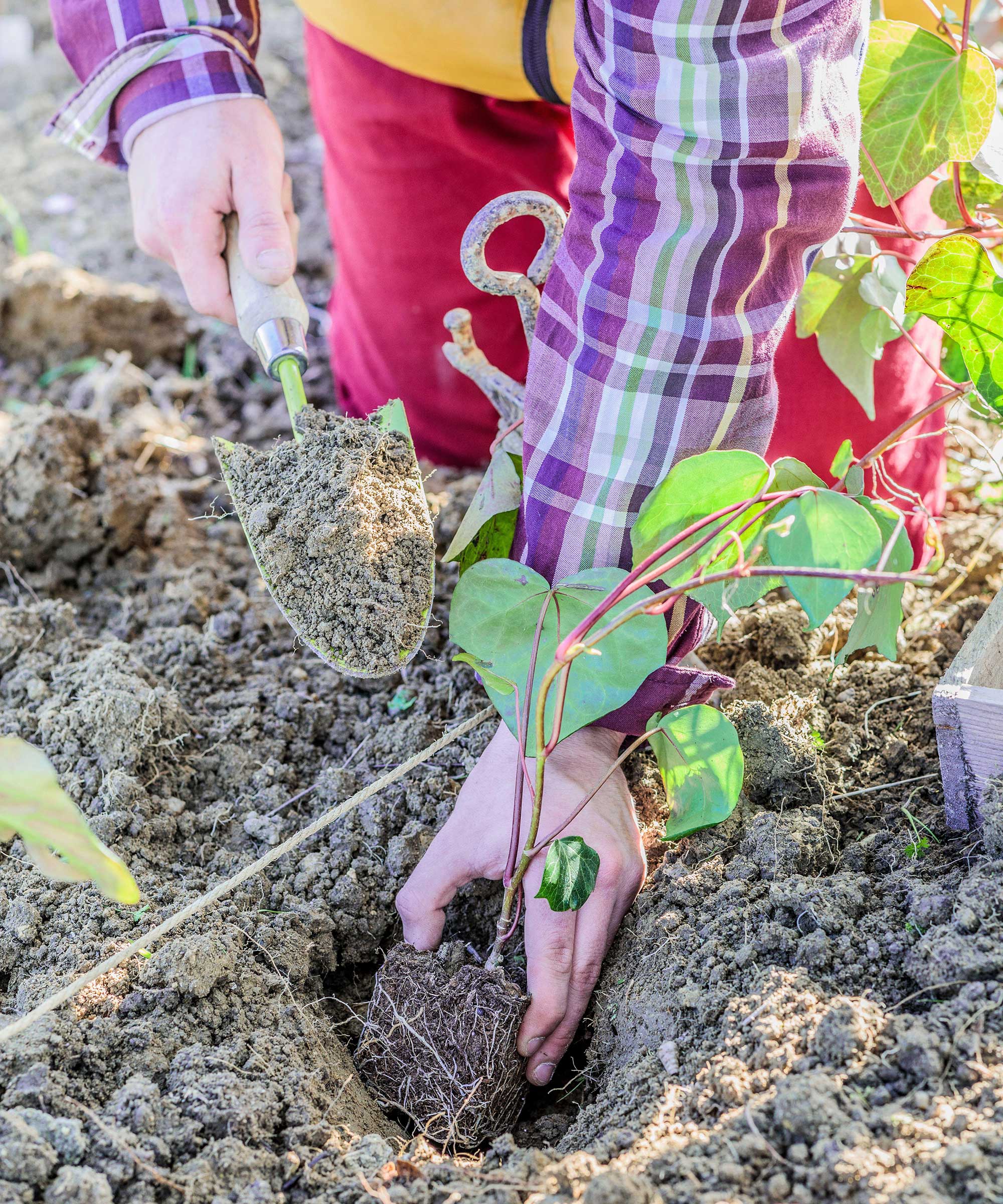
How to care for ivy plants
Keep climbing ivies well watered in their first year. Then, once they have started to climb, ivies on walls and tree trunks need little attention. When they reach the top of their support they can be pruned back in spring to prevent the development of flowers and fruits.
If a plant becomes overgrown or falls away from its plant support, it can be cut back to 12in (30cm) in spring and well watered and fed. It will quickly re-grow.
It will take a year or two for ground cover ivies to make a dense cover. Be sure to remove any weeds that appear between the young plants. Spread can be hastened by using stones to weigh down the stems and keep them in contact with the ground. They will make roots and the area will be covered more quickly.

How to propagate ivy
Ivies root easily from plant cuttings at almost any time of the year except during the winter.
- Snip off shoots about 3-6in (7.5-15cm) long. Trim below the lowest leaf joint and snip off the leaves on the lower half leaving at least two leaves in place.
- The cuttings can be rooted in pots of seed starting mix (available on Amazon) – push each in, leaving the lowest leaf just above the soil.
- Water well, place in an open-topped clear plastic bag and stand on a shelf in a sunroom or screened porch, out of direct sun.
- Rooting will take three or four weeks, after which the rooted cuttings can be moved to individual pots.

Common problems with ivy
Ivies suffer from few pest problems, although in some areas they are favorites with deer. Mites, scale insects and aphids may cause trouble, but are much more common on ivies grown in the home than those grown outside. Outside, mites are most common on ivies growing on sunny walls.
In deck or patio containers, vine weevil grubs can cause serious damage as they eat the roots, especially in winter, and in summer the adults may eat notches in the edges of the leaves. Organic treatments are available for most pest problems.
The only disease that may cause a problem is leaf spot disease which causes ugly brown marks to appear on the leaves. Remove the damaged leaves by hand or, if the infection is severe, use a fungicide.
Different problems need different treatments, so take advice from your local extension service.
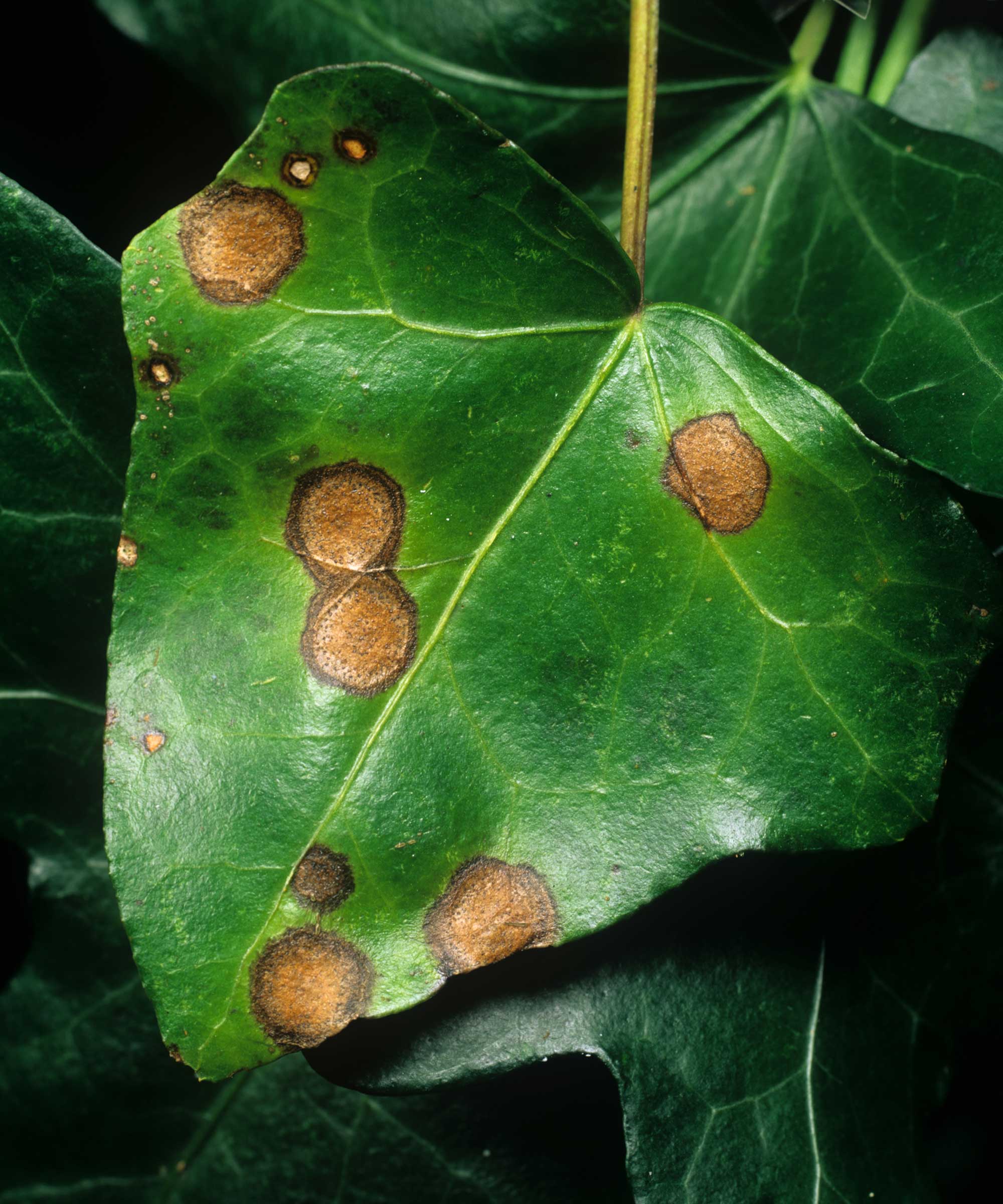
Is ivy a good houseplant?
Many ivies make very good plants for indoor gardens, in the right conditions. Variegated, neat-growing varieties such as ‘Eva’ and ‘Harald’ make ideal houseplants and can be trained on ornamental frames. They look good all year round.
The problem is that ivies appreciate cool, moist and shady conditions – they grow naturally in woods and forests – but most homes are warm, dry and some situations can be very bright. The leaves of ivies grown in hot dry rooms indoors can dry out and drop off, and plants are often attacked by tiny mites that dry up the leaves and create gray webbing that develops a cobweb look.
Grown in a cool place, in good light but not in direct sun, indoor ivies can be very attractive if watered regularly, fed every month except during winter, and moved into a slightly larger container when the pot becomes full of roots.
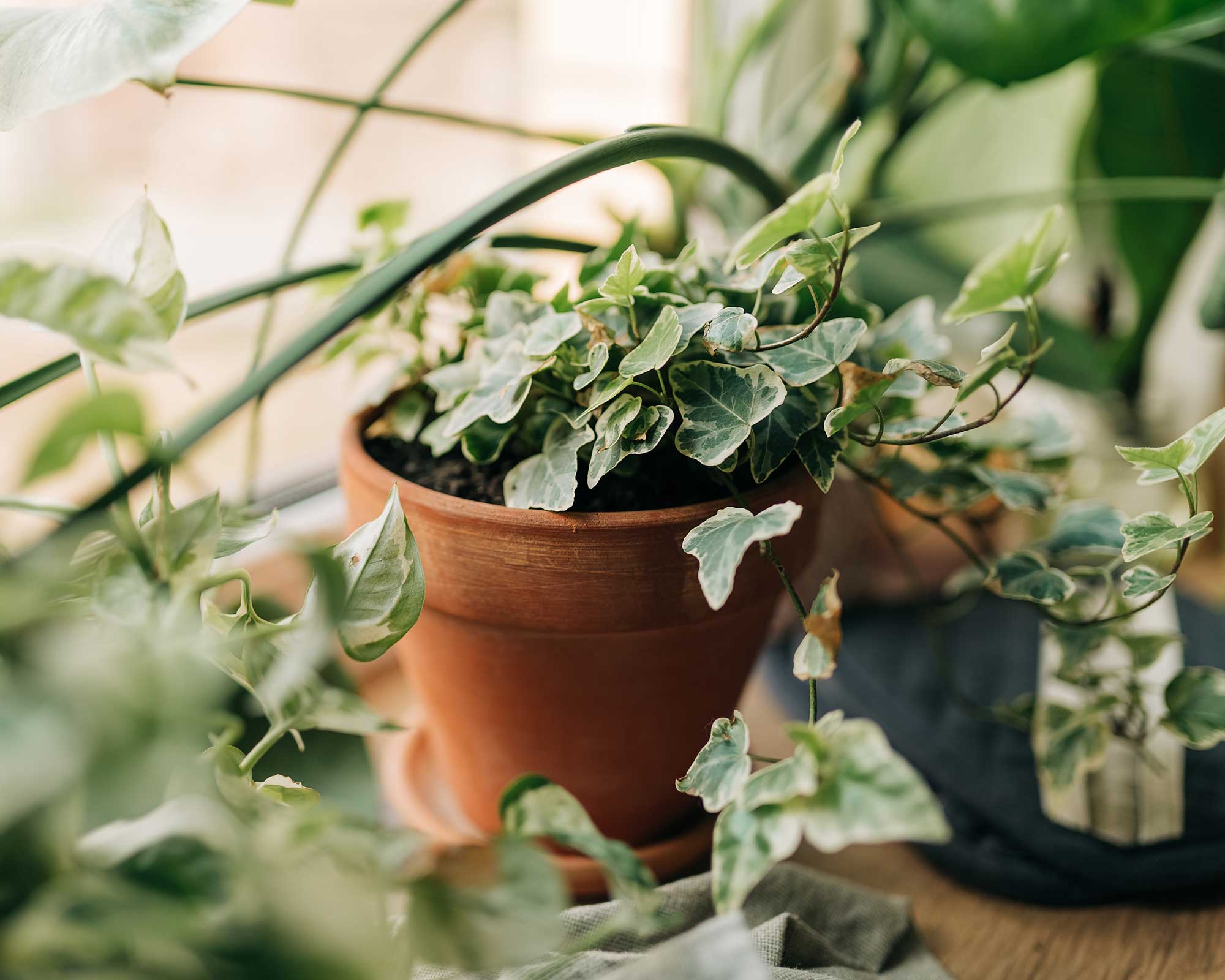
Does ivy kill trees?
In general, no, ivy is not harmful to backyard trees. The tiny roots that attach the ivy stems to their host tree do not penetrate the bark and do not suck sap from the tree.
Research suggests that trees that host ivy grow as strongly as those that do not. However, when ivy grows high into the crown of the tree, the increased wind resistance can cause the tree to be more susceptible to storm damage.
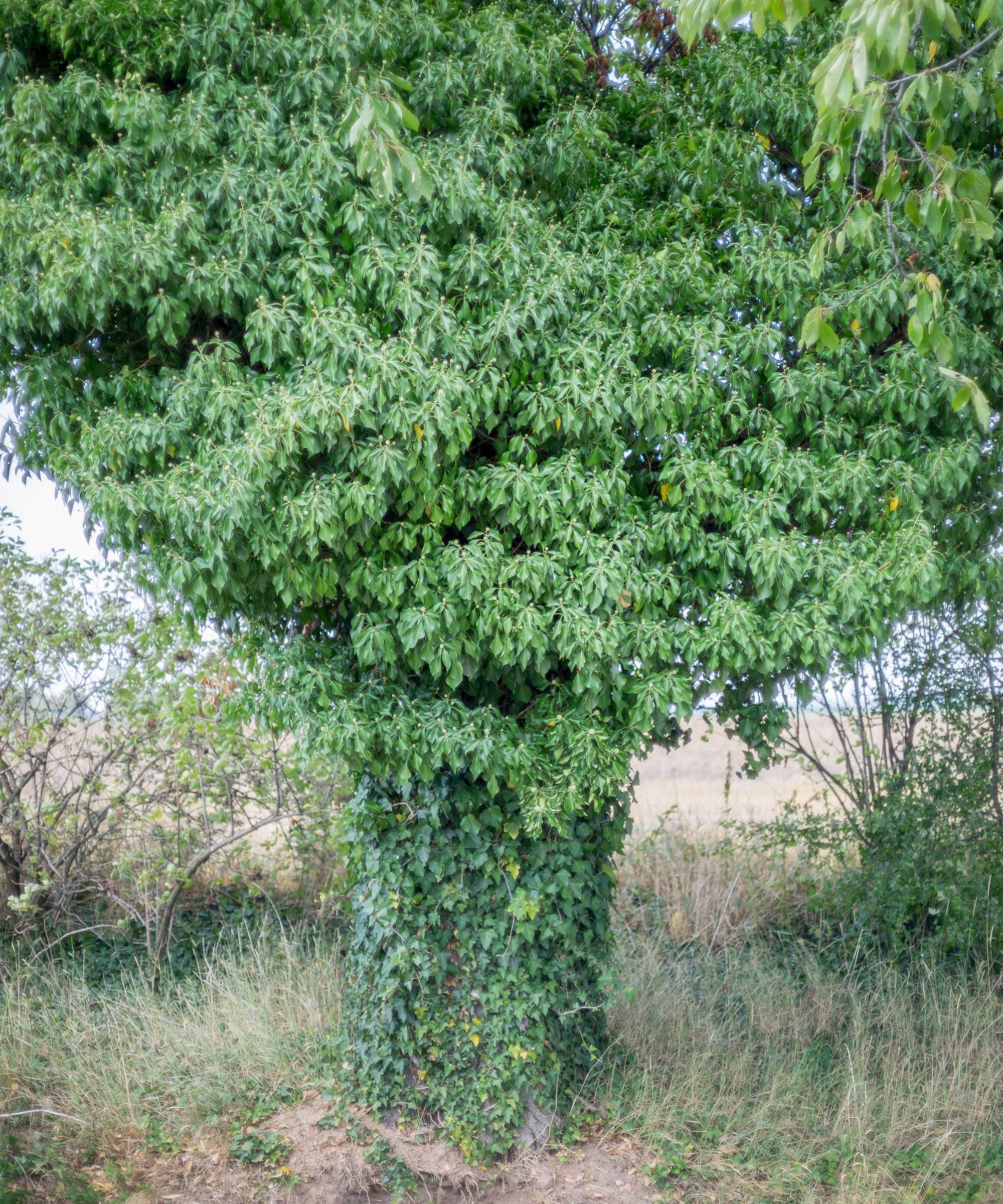
Is it OK to plant ivy to climb the wall of my house?
Although ivy is often used as a plant for garden walls, many houses are unsuitable as a host for ivy. Its shoots can penetrate cracks in the siding or masonry, block gutters and work their way in around windows.
Ivy is, however, usually safe on modern brickwork which provides a grip for the tiny roots that support the plant while not providing cracks into which the ivy can insert itself. It pays, though, to cut it back every year to keep the stems out of gutters.
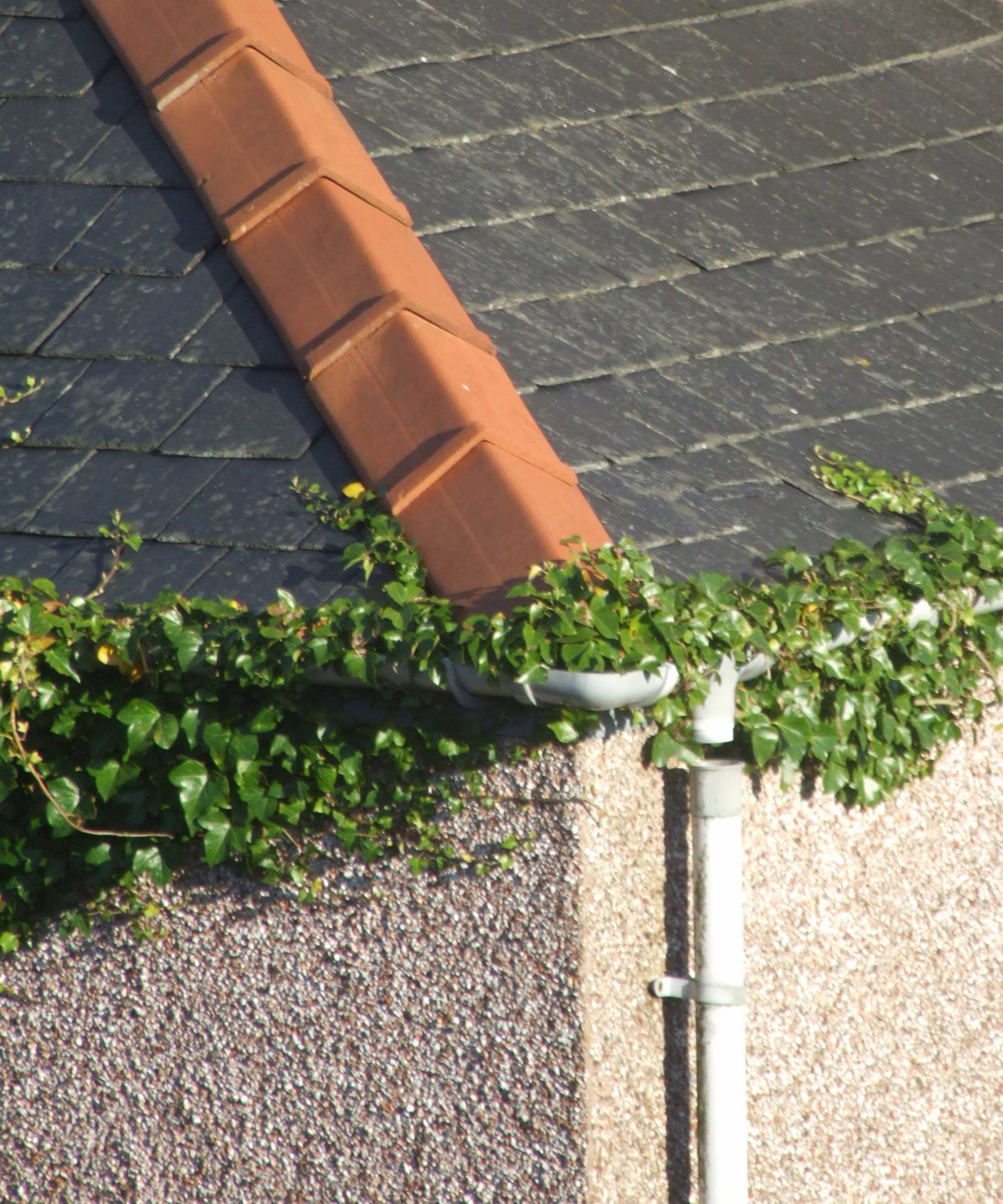
Is ivy deer resistant?
No, generally ivy is not a deer-resistant plant.
The experts at the New Jersey Agricultural Experiment Station, who have investigated deer-resistant plants, rate ivy as 'Occasionally Severely Damaged', the second most deer-resistant category. However, when ivy grows through a deer fence into the unfenced area of a yard it is often quickly eaten.

Is ivy invasive?
Yes, it can be. Ecosystem Gardening has strong views about ivy; 'Unfortunately, English Ivy (Hedera helix) is one of the most pernicious, nasty, and destructive of the invasive plants because it not only destroys native habitat, it can also destroy your house.' But this does not apply in many parts of the country, especially in areas colder than USDA Z4.
Ivy is cited as an invasive plant in western states, it is banned from sale in Oregon, and in the east is considered invasive from Massachusetts and Indiana south to Florida. So, it's best to check before you go to plant it in your backyard.
Variegated varieties are generally much less invasive than green-leaved varieties but may occasionally develop green-leaved shoots – which should be removed promptly.
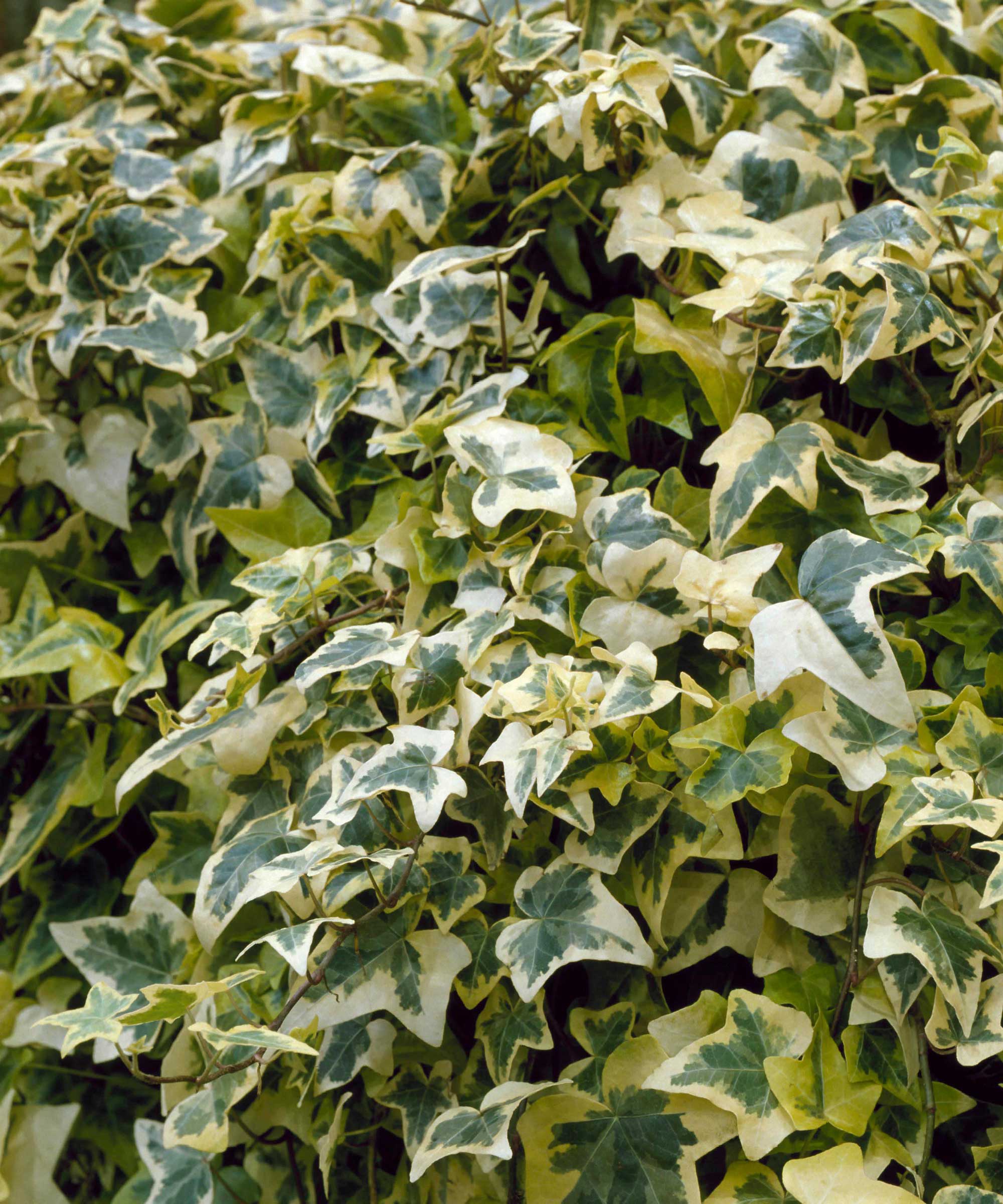
How to buy ivy plants
In retail outlets, especially DIY stores and many other retail nurseries, ivies are usually offered in small pots making them suitable purchases for both outdoor use and as indoor plants. However, you may find that the variety name is not given or it may be vague, such as 'Variegated'. In that case, check the guidance provided on the tag, or simply pick the plant whose coloring you admire.
Because ivies can be grown both outside and in the home, in garden centers they may be displayed under cover with other houseplants as well as outside, unprotected. The same varieties can usually be chosen for both indoor and outdoor use, but ivies bought from a houseplant display will need help adjusting to cooler outdoor temperatures. Stand the plants in intermediate conditions for a week or two, allowing them to adjust.
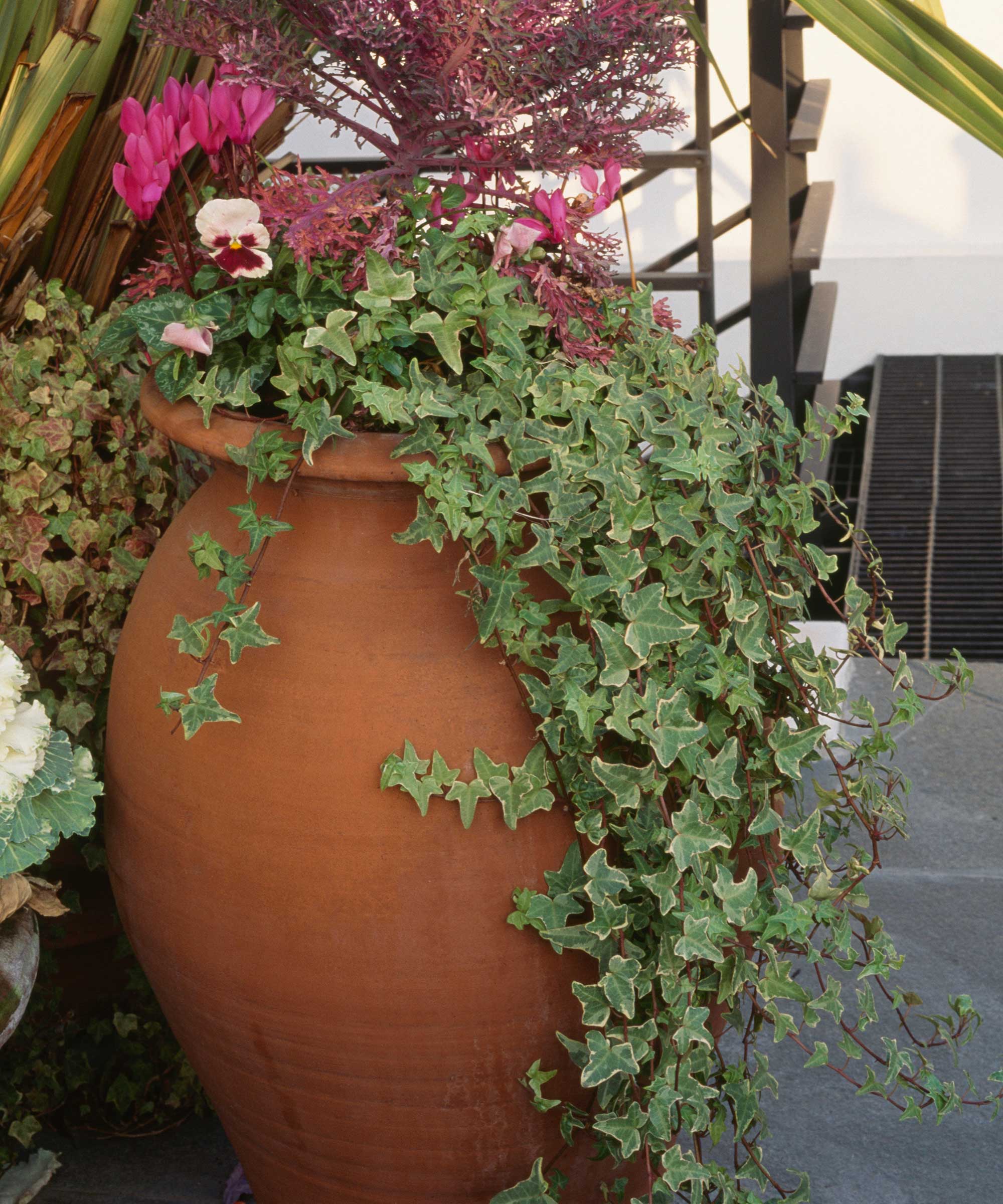
Where to buy ivy plants
Want to grow ivy in your plot? These quicklinks will help you get started.
Shop ivy in the US:
Shop ivy in the UK:

Graham Rice is a garden writer who has won awards for his work online, and in books and magazines, on both sides of the Atlantic. He is a member of a number of Royal Horticultural Society committees and the recipient of the 2021 Garden Media Guild Lifetime Achievement Award.
